Air Operations, Europe
RAF BOMBER COMMAND
Daylight Ops:
- 347 aircraft of Nos. 3, 4, 6 and 8 Groups bomb 6 V-weapon launching sites. Included in this total are 197 Halifaxes, 120 Lancasters and 30 Mosquitos. Most of the targets are covered in cloud and some of the bombing is scattered.
- 1 Halifax and 1 Lancaster are lost.
Evening Ops:
- 8 Mosquitos are sent to Scholven/Buer, 8 Halifaxes and 4 Stirlings lay mines off the Biscay ports, 19 aircraft are on Resistance operations, and there are 9 Serrate patrols and 14 RCM and 4 OTU sorties.
US 8th AIR FORCE
FRANCE:
- Despite bad weather over the target area that results in no attacks on assigned targets, 140 1st Bomb Division B-17s attack several bridges and Chateaudan Airdrome during the morning.
- During the afternoon, 37 of 104 3rd Bomb Division B-24s dispatched attack V-weapons launching sites, as assigned, and 15 of 77 3rd Bomb Division B-17s dispatched against V-weapons sites attack targets of opportunity, including the St.-Omer/Longuenesse Airdrome.
- During the day, 313 VIII Fighter Command fighters escort the heavy bombers, and, during the morning, 90 P-38s strafe ground targets.
- VIII Fighter Command pilots down 6 Luftwaffe aircraft over France between 0825 and 1400 hours.
US 9th AIR FORCE
FRANCE:
- During the morning, 60 of 250 IX Bomber Command B-26s and A-20s attack various lines of communication targets, but the remainder are thwarted by bad weather.
- Throughout the day, 9th Air Force fighters and fighter-bombers cover the beachhead area and attack numerous on-call targets and targets of opportunity.
US 12th AIR FORCE
ITALY:
- Bad weather cancels most of the operations of 12th Air Force, but XII TAC fighter-bombers are able to attack several rail lines, German Army tanks and motor vehicles, and several gun emplacements.
US 15th AIR FORCE
ROMANIA:
- 15th Air Force B-17s and B-24s, led for the first time by B-24s equipped with H2X radar, attack Ploesti's Xebia and Concordia-Vega refineries through an otherwise impenetrable smoke screen.
- Pilots of the 1st, 52nd, and 325th Fighter Groups down 13 Axis fighters along the bomber route or over Ploesti between 1000 and 1115 hours.
- 6 15th Air Force aircraft are lost
[  | |   ] ]
Eastern Front Troops from the 3rd Belorussian Front take Lida, 50 miles east of Grodno. Army Group North is isolated in the Baltic states as a direct result of Hitler's reckless orders. The Russians cross the Vuoksi River in the Karelian Isthmus.
CENTRAL SECTOR
The Soviet 5th Army encircles Vilnius, cutting off nearly 15,000 Germans in the city. Other units of the 3rd Belorussian captures Lida as they rush toward the Niemen.
[  | |   ] ]
India, Home Front Gandhi concedes that an independent India must be partitioned between Hindus and Moslems.
[  | |   ] ]
Italy On the left flank of the American 34th Div the northward advance beyond Rosignano continues, while on the right the US 88th Div takes Volterra. The French units are advancing on Poggibonsi. The British 8th Army prepares an attack against Arezzo.
[  | |   ] ]
Marianas
SAIPAN
The 2nd Marine Division mops up the additional enemy on the western flank of the corps. The attached 165th Infantry reaches the coast except for one company that remains behind to mop up Paradise Valley. The 4th Marine Division attacks with the 2nd Marines of the 2nd Marine Division and the 24th and 25th Marines and quickly reaches Marpi Point, their final objective. Saipan is declared secure by Adm Turner at 1615. Final mop up of stragglers is assigned to the 2nd and 4th Marine Divisions, with the 165th Infantry still attached to the latter.
During the Saipan operation, the Northern Troops and Landing Force suffers 14,111 casualties, about 20% of its total strength of 71,034. Of the 14,000 casualties, 3,674 are Army and 10,437 are Marine Corps. The Japanese garrison of about 30,000 is virtually destroyed. There are estimeated 27,000 Japanese dead as well as 1,780 prisoners, both figures include a number of civilians. At Marpi Point hundreds of civilians, possibly collaborators with the Japanese, are found smashed to death at the foot of a high cliff.
Saipan is within bombing range of Japan and is to become a base for B-29s.
[  | |   ] ]
Mediterranean The US minesweeper Swerve (AM-121) hits a mine and sinks in the Italian area.
[  | |   ] ]
New Guinea On Biak, the AAF joins in the bombardment of the Ibdi Pocket.
In the Wakde-Sarmi area, the 1st Battalions of the 1st and 63rd Regiments complete the battle for the crest of Hill 265, southwest of Hill 225. This is the last Japanese strongpoint in the Maffin Bay region.
[  | |   ] ]
Pacific - The US submarine Sunfish (SS-281) attacks a Japanese convoy in the Kurils sinking the army cargo ship Taihei Maru (6284t) north of Araito Island.
- The US submarine Tautog (SS-199) sinks the Japanese fishing boat Yawata Maru southwest of Kushiro.
[  | |   ] ]
Western Front The American 5th Div lands in France. The US VIII Corps, trying to push beyond La Haye-du-Puits, is pinned down by the difficult terrain and by the stiff resistance of the divisions of the German LXXXIV Corps. The American 4th and 83rd Divs of VII Corps advance toward Pèriers under a violent German barrage. The 9th Div, brought up from Cherbourg, is sent into the sector east of the Taute River. In the XIX Corps sector the 30th Div's offensive toward the road linking St Lô and Lessay continues.[WF]
In the British 2nd Army sector, units of the British I Corps begin to enter the suburbs of Caen from the west, the Canadian 3rd Div, and north, the British 1st Div, driving out the 12th Panzer SS Div. The Canadians also take Carpiquet Airfield.[CAEN]
[  | |   ] ]
Images from July 9, 1944
Men of 1st King's Own Scottish Borderers
|
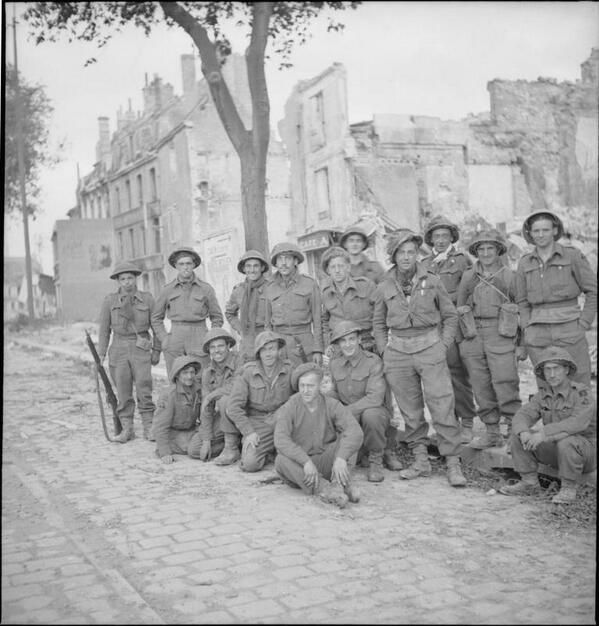 |
|
Men of the Lancashire Fusiliers
|
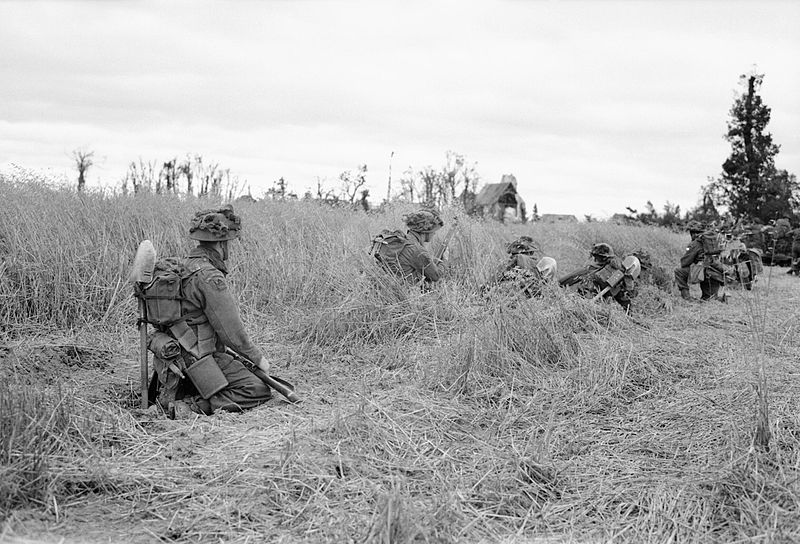 |
|
Advancing on Caen
|
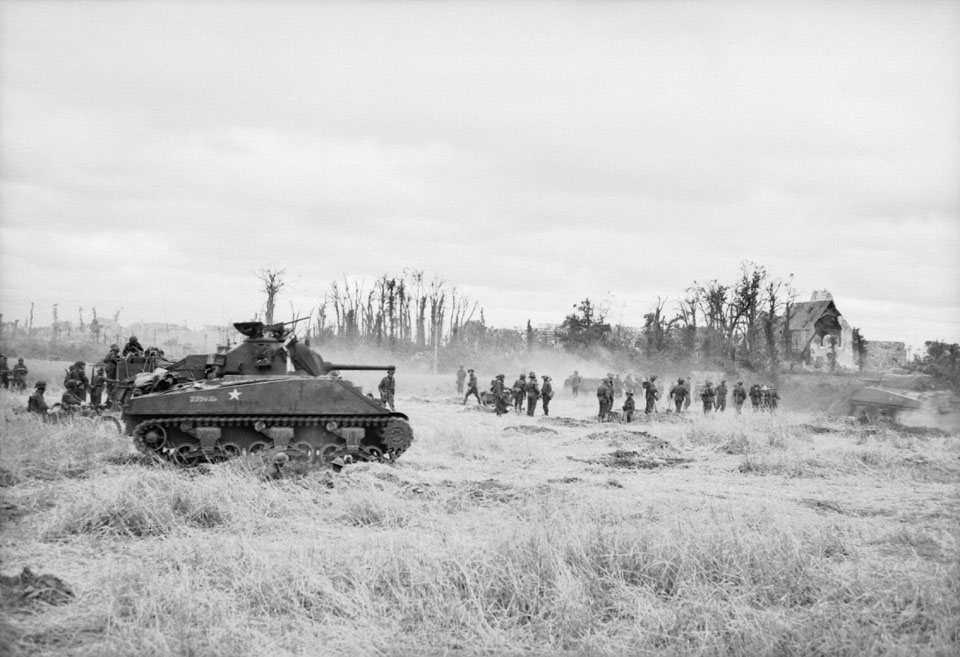 |
|
Operation CHARNWOOD
|
 |
|
Some of the First Troops to Enter Caen
|
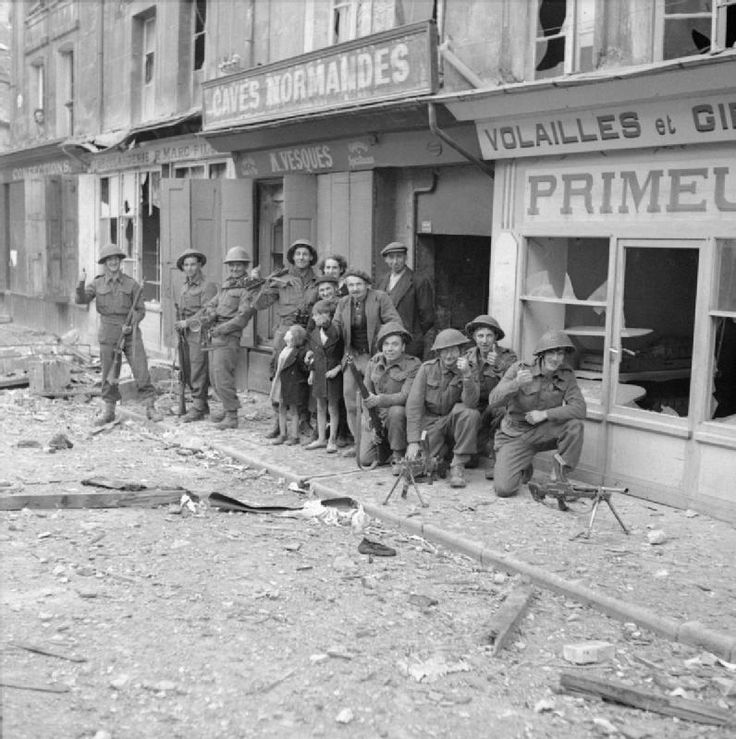 |
|
Looking Out for Snipers
|
 |
|
Sherman Tanks Moving Past Panzer IVs
|
 |
|
30th Men Passing a 90mm Anti-Aircraft Gun
|
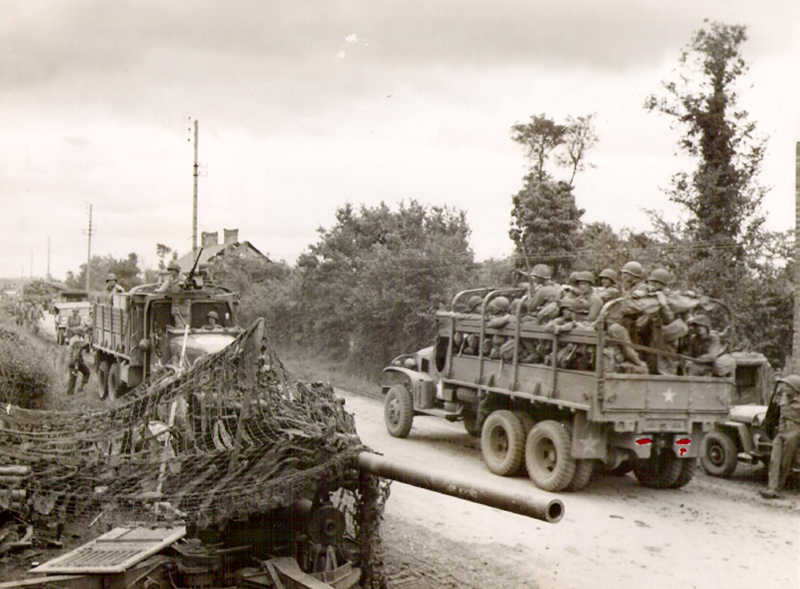 |
|
A German Soldier Surrenders
|
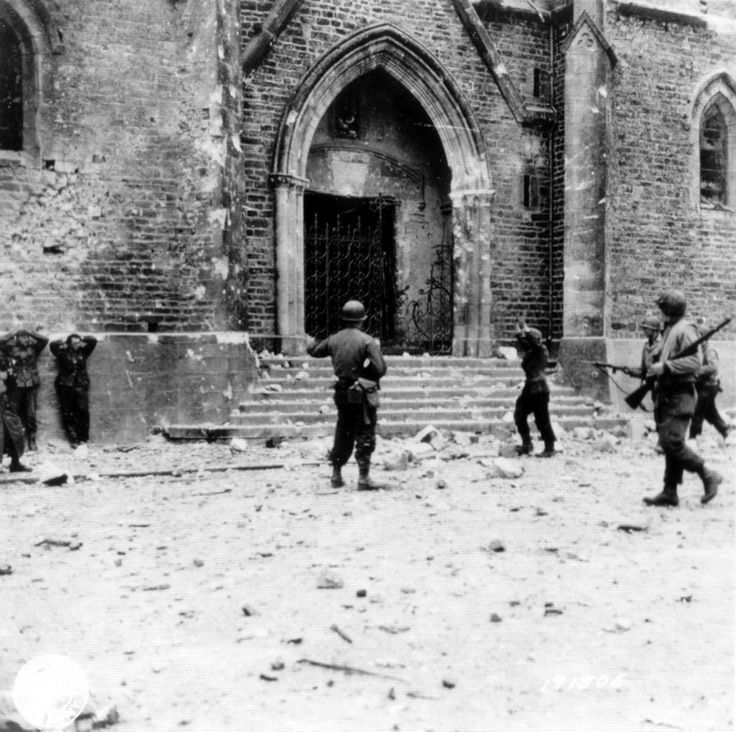 |
|
Fabricating a Hedge Cutter
|
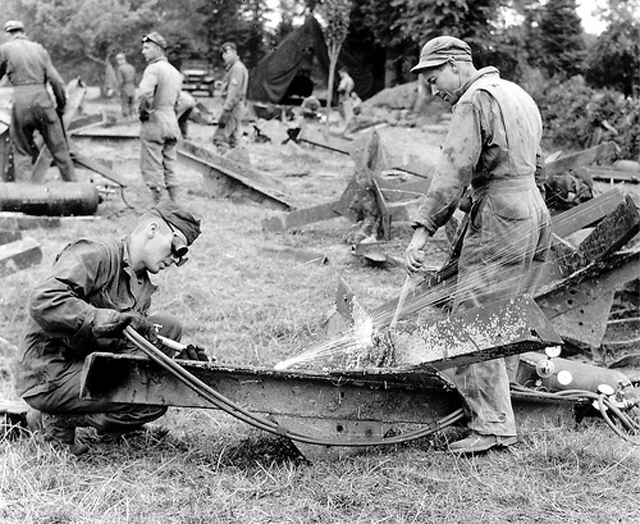 |
|
A Sherman Tank Equipped with a Hedge Cutter
|
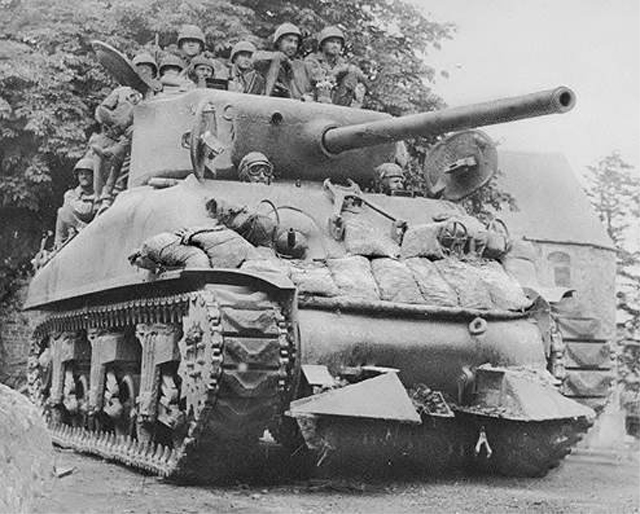 |
|
Hedge Cutter Designer
|
 |
|
|











